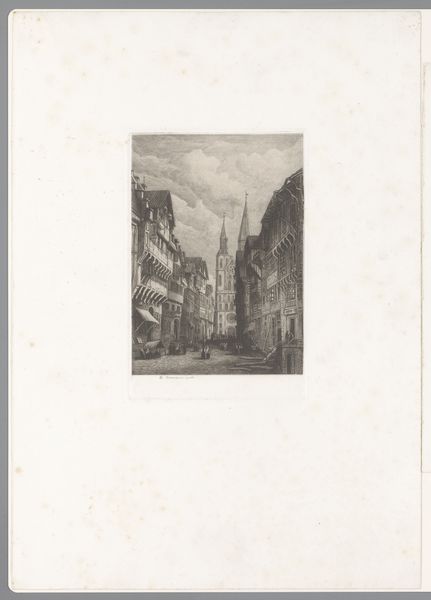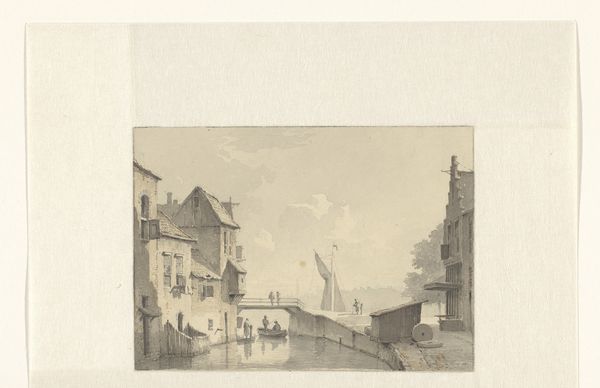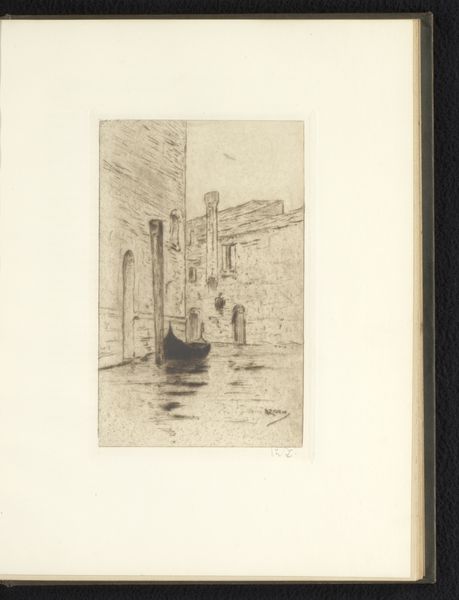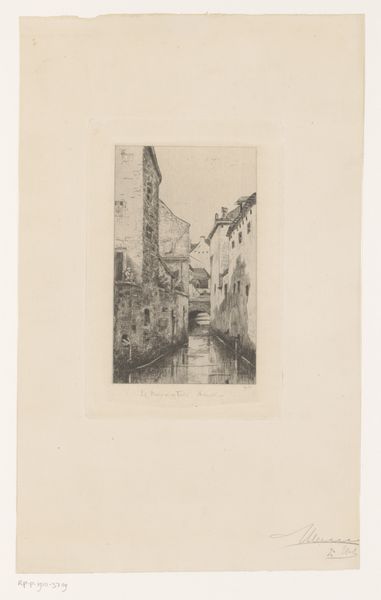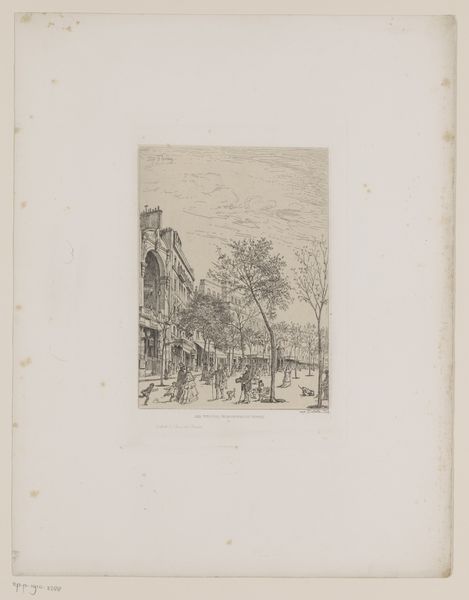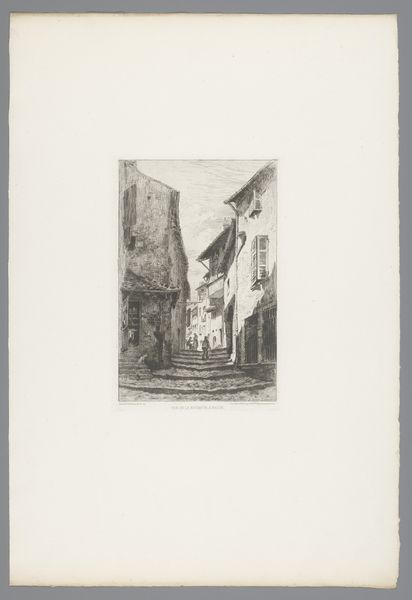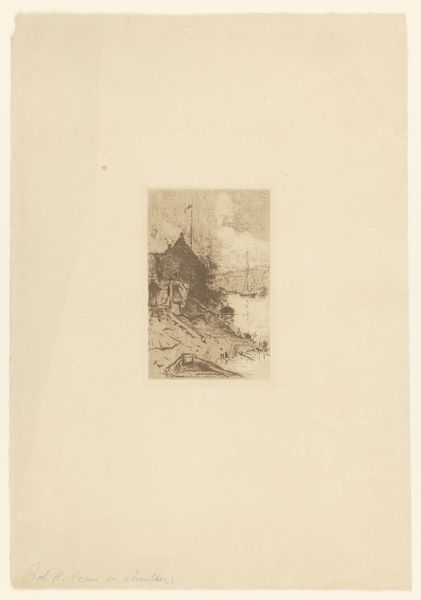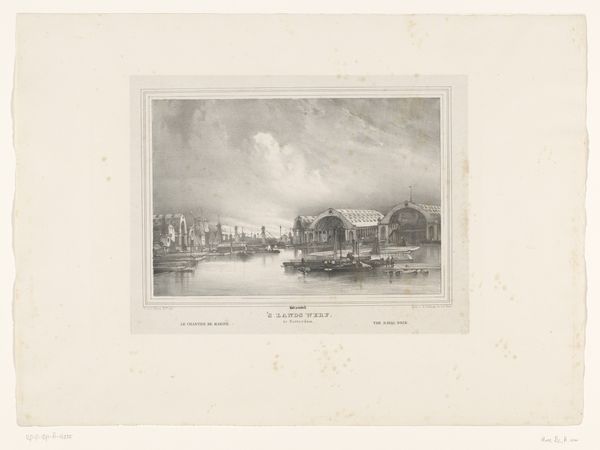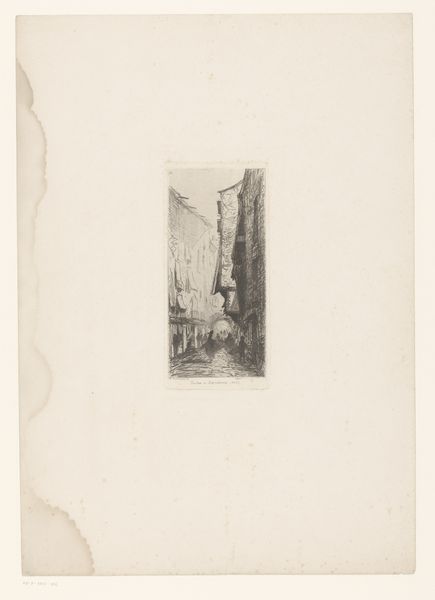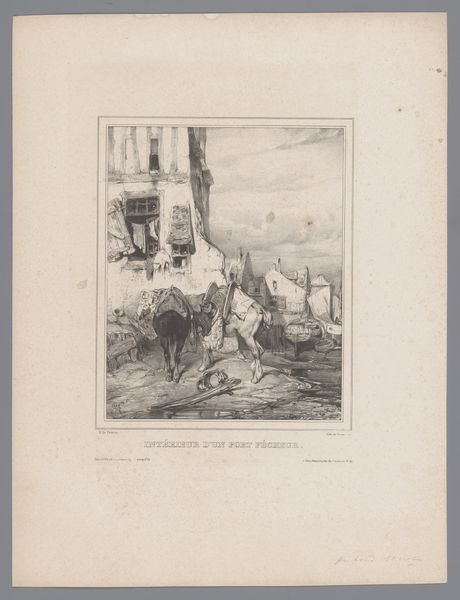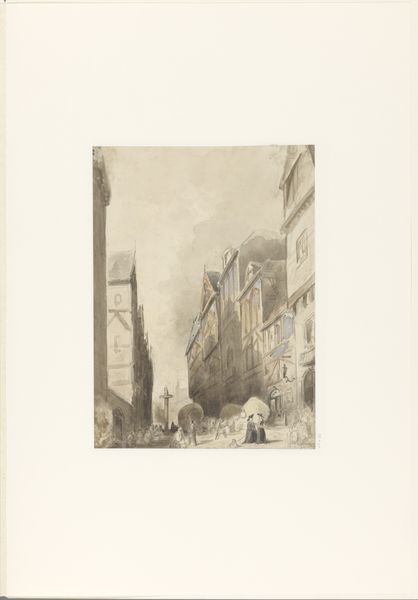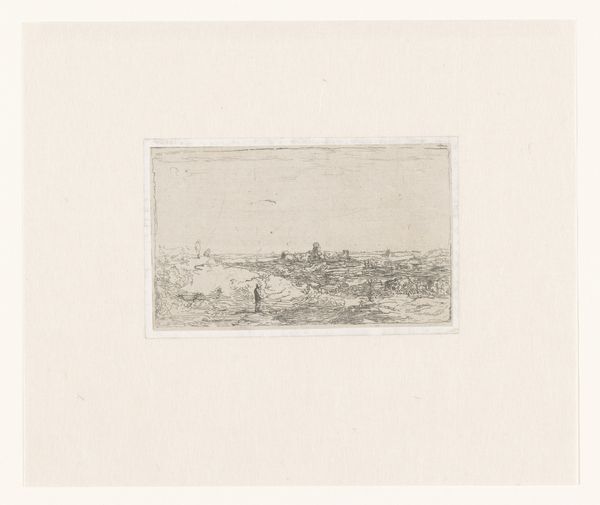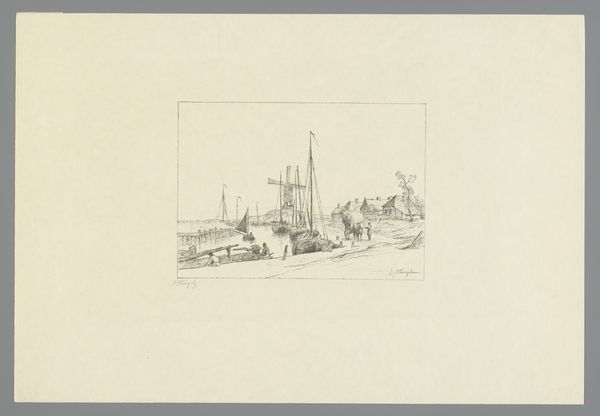
drawing, ink
#
drawing
#
landscape
#
ink
#
romanticism
#
cityscape
Dimensions: height 354 mm, width 271 mm
Copyright: Rijks Museum: Open Domain
Curator: Eugène Lepoittevin's "Vissersboot in een Vlaamse havenstad," created between 1832 and 1840, captures a bustling Flemish harbor scene with a detailed ink drawing. What's your immediate reaction? Editor: There's a stillness despite the implied activity, isn't there? The monochromatic palette lends it a subdued, almost dreamlike quality. And the ink strokes seem surprisingly efficient— capturing detail and mood in tandem. Curator: Precisely. Notice how Lepoittevin uses hatching and cross-hatching to define the textures of the building's facade and the boats, which helps create volume and depth. The composition itself leads the eye from the dark foreground, with the large fishing boat, back to the distant cityscape and the architecture. Editor: I’m interested in the socio-economic context of the scene. The artwork showcases a vibrant port teeming with people involved in various maritime activities. You can almost imagine the intense labor and local community ties from the details captured of the fishers working so closely together. The focus on labor as a subject humanizes this space. Curator: It’s hard not to be drawn in by Lepoittevin’s precise hand; it brings forward Romanticism’s interest in atmospheric effect. Think of how he deploys line weight variations, the artist gives us a sense of movement, a breeze on the water— without disrupting the overriding tonal calm. Editor: The choice of ink too makes the process transparent— highlighting the physicality and effort behind image creation. It wasn't simply about capturing a scene but engaging directly with a manual, hands-on artistic labor, which contrasts significantly to more commercial practices. Curator: It indeed offers us more than mere visual description; it creates a palpable mood, engaging in a kind of picturesque nostalgia. We're viewing more than the architecture and maritime operations. Editor: Yes. This scene underscores the artistic labor inherent within depictions of ordinary people engaged in laboring trades. Curator: In short, the drawing compels our modern analysis with layered aesthetic value and art-historical richness. Editor: Definitely; through method and scene, Lepoittevin's rendering prompts considerations for an industrial environment's impact on human endeavor.
Comments
No comments
Be the first to comment and join the conversation on the ultimate creative platform.
